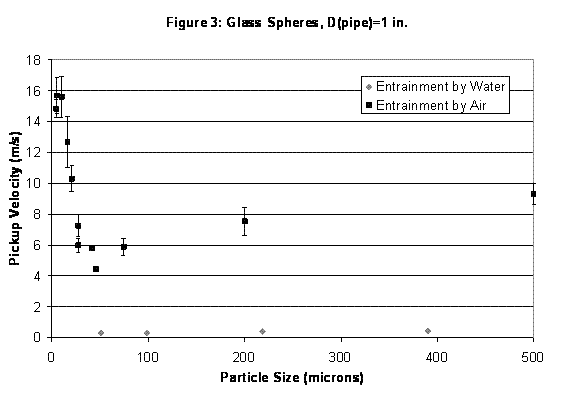
ACS PRF | ACS
All e-Annual Reports

44508-G9
Effect of Particle Properties on Particle Entrainment in Liquid Flow
Pickup velocity, or the velocity required to pick up a particle from rest by a flowing fluid, has applications in many fields, such as environmental, biomedical, chemical, and microfluidic processes. Pickup velocity is a function of many variables, including the properties of the entraining fluid. Several authors have investigated pickup velocity for a variety of materials, but no one has compared pickup velocity data for liquids and gases. Since much of the published data has been collected using a variety of methods, the data cannot be directly compared. This project is related to the previous work of the PI, where the effects of particle shape, particle size, and electrostatic behavior on pickup velocity by an air stream were investigated1. To study the effect of fluid properties, the experiments will be repeated in a similar system with distilled water as the carrier fluid. By using a liquid rather than a gas as the carrier fluid, several forces acting on the particle will be affected, resulting in a shift in pickup velocity. Electrostatic forces and liquid bridging forces present in gas-solids systems are dampened with the presence of a continuous liquid phase, and a much larger buoyancy force due to the increased fluid density is also present in a liquid-solid system. Therefore, it is anticipated that the pickup velocity will be much less in a liquid system than in a gas system.
In this project, the experimental setup and procedure is similar to the one used previously, but slightly modified to accommodate the presence of a liquid. Figure 1 shows the experimental setup used to measure pickup velocity. To date, only the effect of particle size on pickup velocity has been investigated for the liquid-solids system. Glass spheres (Mo-Sci Corp., Future work includes the continuation of the particle size investigation. We will also investigate the effect of particle shape and particle density and perform a detailed comparison of the data with the results from our previous work. The data will be non-dimensionalized in order to be useful across a range of systems, and a refined pickup velocity model will be developed similar to the one previously published to account for changes in fluid properties. 1. K. Hayden, K. Park, and J. Curtis, “Effect of Particle Characteristics on Particle Pickup Velocity,” Powder Tech. (2003) 131(1):7-14. 

